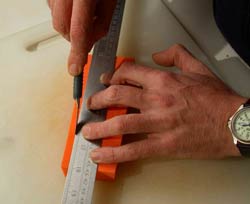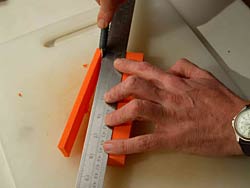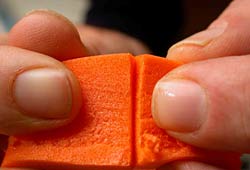I’d been sent a promotional mouse mat which had delaminated itself on receipt, leaving me with a picture of someone’s factory and a sheet of black, closed-cell foam plastic. Ah, that’ll be handy, I thought, and stuffed it into my rucksack. That was about four years ago. Then came the fateful day when, tackling a weedy gravel pit, I needed some expanded polystyrene to ‘stuff’ a deadbait so it would pop up. Usually there’s loads of it washed up like a line of detergent foam along the shoreline. Not this time. So I started rummaging to find a substitute. I found the mouse mat. Try as I might I couldn’t find an easy way to stuff bits down the neck of my deads, and then a light bulb pinged over my balding pate and I came up with this idea. How to make Lifebelts
To cut a long story short, it buoyed the bait up beautifully and I caught a couple of doubles on the baits. For the next two or three sessions, I made a dozen or so lifebelts in differing sizes, and now I wouldn’t be without them. They’re fairly stretchy, so they’ll accommodate a bait that’s near enough the right diameter. They don’t break. They’re easy to trim down with scissors to get a precise, neutral buoyancy bait (which is excellent for deadbait drifting). I’ve also found that fish oils cling to them nicely, to add a scent trail, and that if you position them carefully they make a superb and secure hookhold for the end treble.
Two important details. When you’re gluing this stuff it takes a little while to bond to the plastic. But be patient; the resulting joint is very strong. The thinner the film of superglue, the better it joins. Secondly, make sure you get the right closed-cell foam plastic to do this or the superglue won’t touch it. The rubbery mouse mat material is the very best; if I knew what it is called, I’d take the idea commercial. But you can try a fly-tying material called Plastazote (as I have for the pictures) which comes in sheets and blocks, and several colours. Evo-stik Impact works better to glue this material. | ||||
|
Welcome!Log into your account














